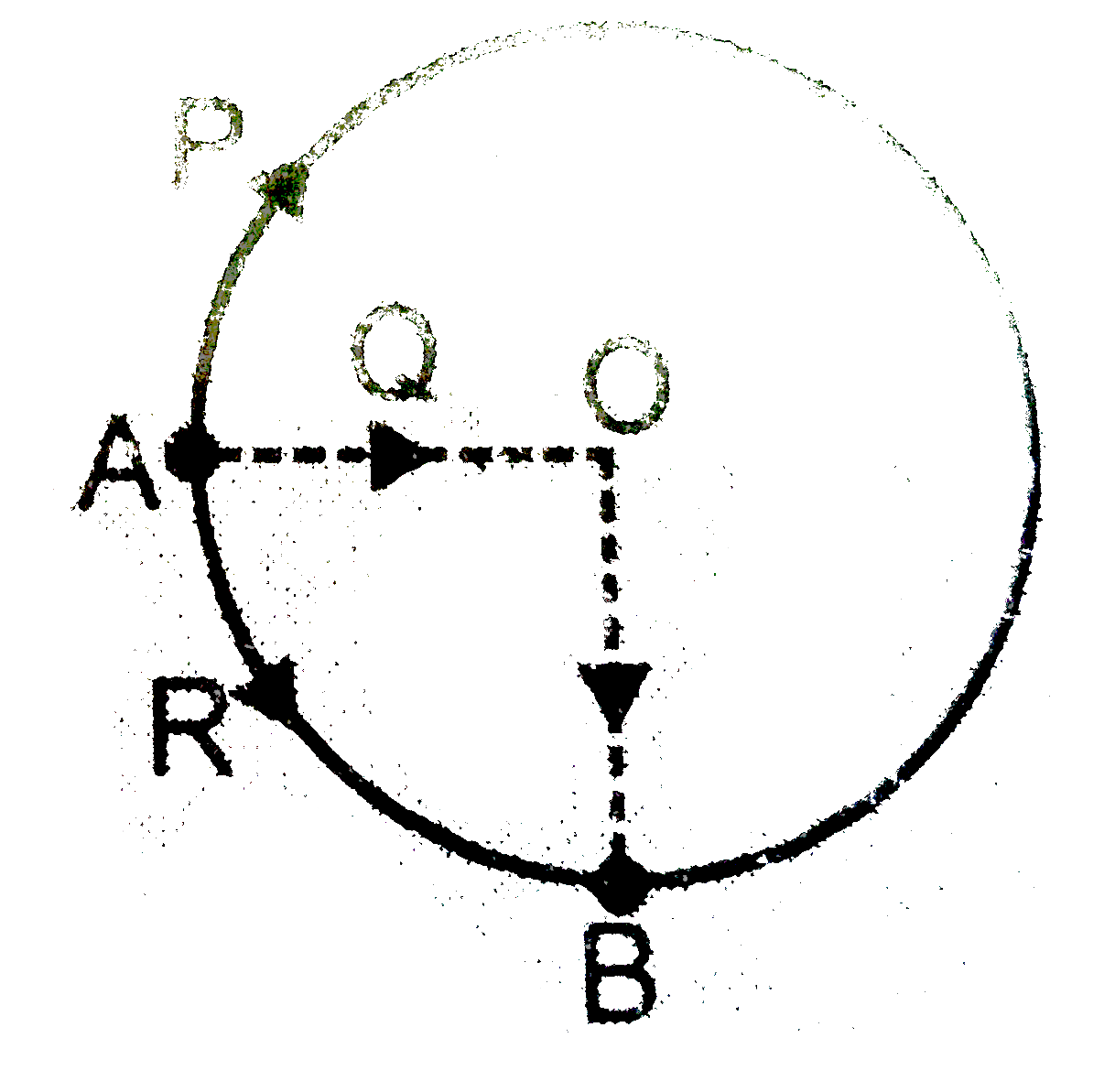A body is falling from height 'h' it takes t1 time to rech the ground. The time taken to cover the first half of height is:-Solution in Gujrati
The correct Answer is:4√2ms−2
v=2t2,aT=dvdt=4t⇒aT(1)=4
aN=v2R=(2×12)21=4
a=√a2T+a2N=√(4)2+42=√32
a=4√2
Topper's Solved these Questions
- MOTION IN A PALNEBOOK - ALLEN CHAPTER - MOTION IN A PALNEEXERCISE - Exercise-04[B]
14 Videos
- MOTION IN A PALNEBOOK - ALLEN CHAPTER - MOTION IN A PALNEEXERCISE - Exercise-05 [A]
11 Videos
- MOTION IN A PALNEBOOK - ALLEN CHAPTER - MOTION IN A PALNEEXERCISE - Comprehension#7
3 Videos
- KINEMATICS-2DBOOK - ALLEN CHAPTER - KINEMATICS-2DEXERCISE - Exercise (O-2)
47 Videos
- NEWTON'S LAWS OF MOTION & FRICTIONBOOK - ALLEN CHAPTER - NEWTON'S LAWS OF MOTION & FRICTIONEXERCISE - EXERCISE (JA)
4 Videos
Similar Questions
A boat is moving with a velocity 3ˆi+4ˆj with respect to ground. The water in the river is moving with a velocity −3ˆi−4ˆj with respect to ground. The relative velocity of the boat with respect to water is.
View SolutionA man wishes to swim across a river 0.5km. wide if he can swim at the rate of 2 km/h. in still water and the river flows at the rate of 1km/h. The angle (w.r.t. the flow of the river) along which he should swin so as to reach a point exactly oppposite his starting point, should be:-
View SolutionA graph between the square of the velocity of a particle and the distance(s) moved is shown in figure. The acceleration of the particle in kilometers per hour square is:-

View SolutionA particle is moving in xy-plane .At certain instant the components of its velocity and acceleration are as follows ux=3m/s,uy=4m/s,ax=2m/s2anday=1m/s2. The rate of change of speed at this moment is
View SolutionA piece of wire is bent in the shape of a parabola y=kx2 (y-axis vertical) with a bead of mass m on it. The bead can slide on the wire without friction. It stays at the lowest point of the parabola when the wire is at rest. The wire is now accelerated parallel to the x-axis with a constant acceleration a. The distance of the new equilibrium position of the bead, where the bead can stay at rest with respect to the wire, from the y-axis is:
View SolutionA body is allowed to fall from a height of 10m. If the time taken for the first 50m is t1 and for the remaining 50s,is t2.
The ratio of time to reach the ground and to reach first half of the distance is .
View SolutionA body is dropped from a large height h in time t0 second. Find the time taken to cover the last meter of fall in terms of t0
View SolutionA particle is projected vertically upwards from a point O on the ground. It takes time t1 to reach a point A at a height h above the ground, it continues to move and takes a time t2 to reach the ground. Find (a) h, (b) the maximum height reached and (c ) the velocity of the partical at the half of maximum height.
View SolutionFor ground to ground projectile, time take by a particle to ge point O to point C is T_(1) and during the same motion time taken by the particle to ge from A to B is T_(2) then height 'h' is :
View SolutionA body is falling from height 'h' it takes t_(1) time to rech the ground. The time taken to cover the first half of height is:-
View SolutionA body released from height 'h' takes time 't' to reach ground. After time t/2. Its height from the ground is
View SolutionA body is dropped from a height H. The time taken to cover second half of the journey is
View SolutionA body is allowed to fall from a height of 100m . If the time taken for the first 50m is t1 and for the remaining 50 m is t2 , then :
View SolutionA body is allowed to fall from a height of 100m . If the time taken for the first 50m is t_(1) and for the remaining 50 m is t_(2) , then :
View SolutionTwo bodies reIeased from different heights fall freeIy and reach the ground at the same time. The first body takes a time,t1=2s and second body takes a time, t2=1s. What was the height of the first body at the time of reIease of the second body?
View SolutionA body falls freely from a certain height. It takes times t_(1) and t_(2) to travel the first and the first and the last half -distances, respectively. Then
View Solution
